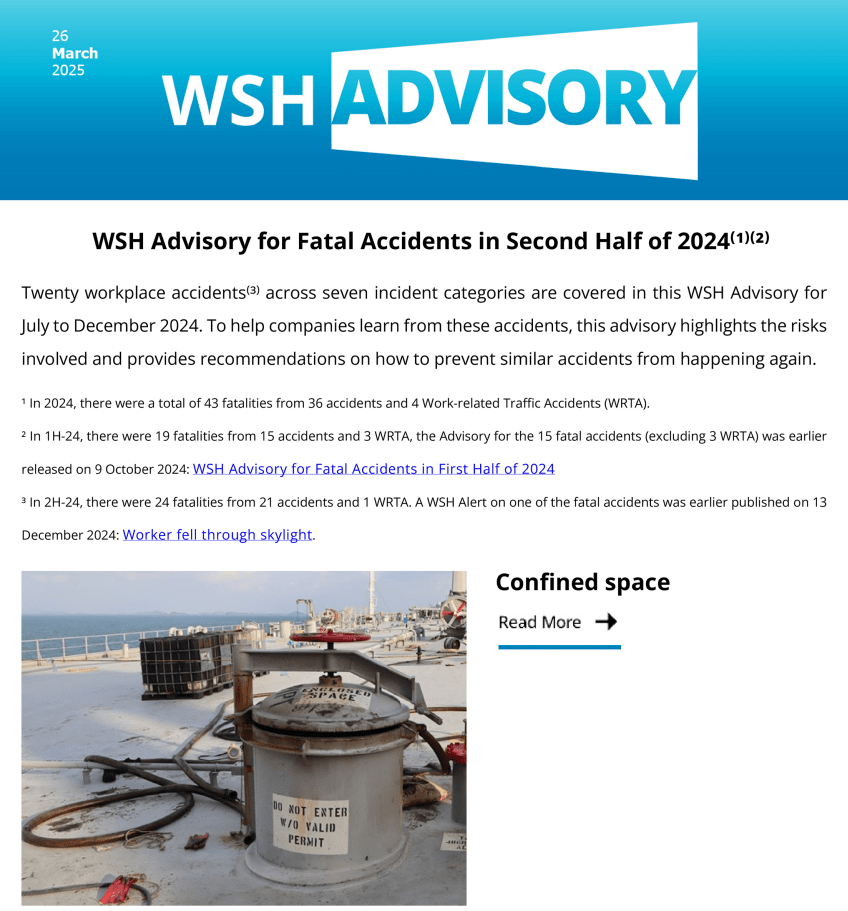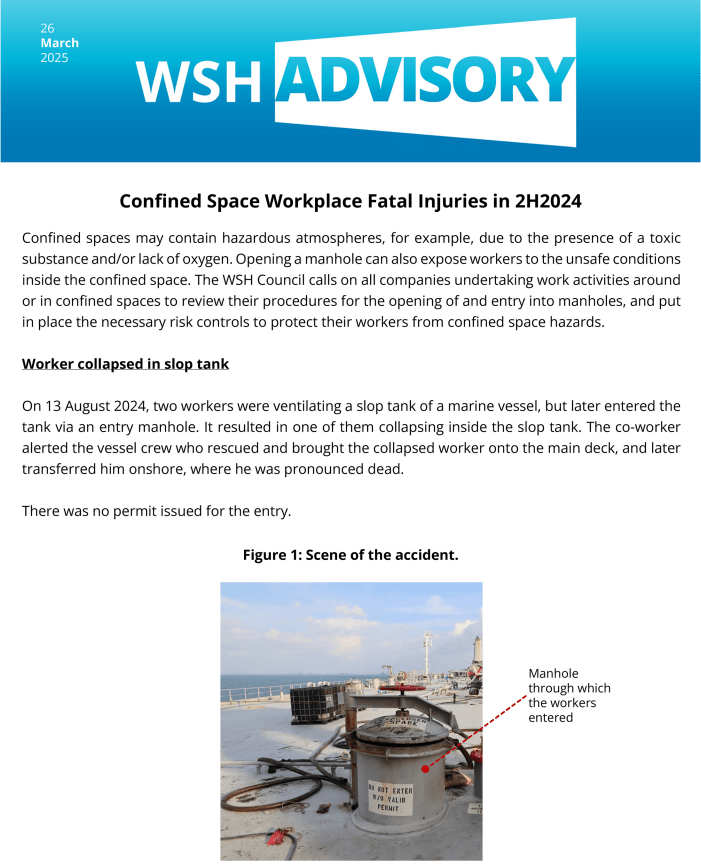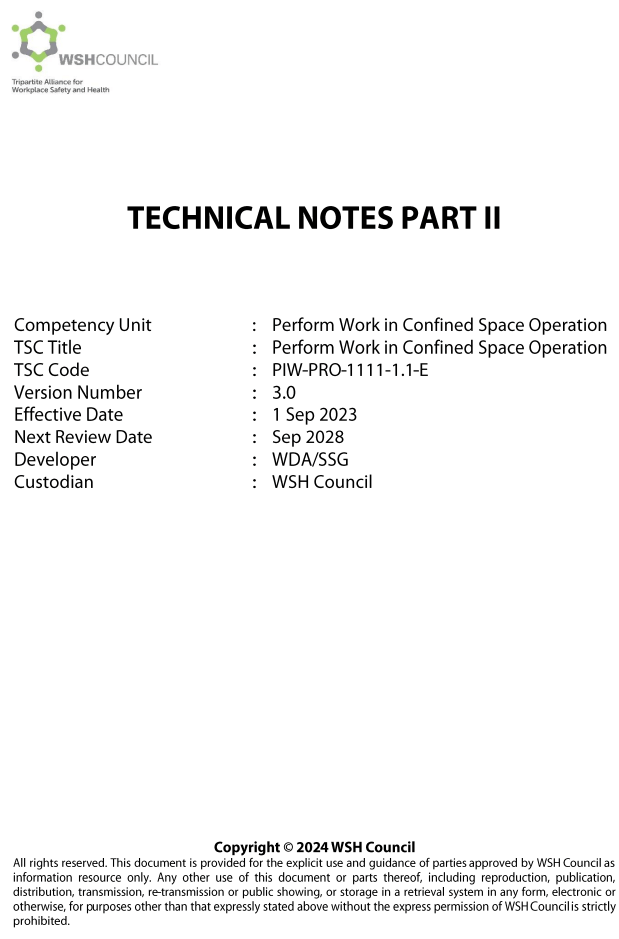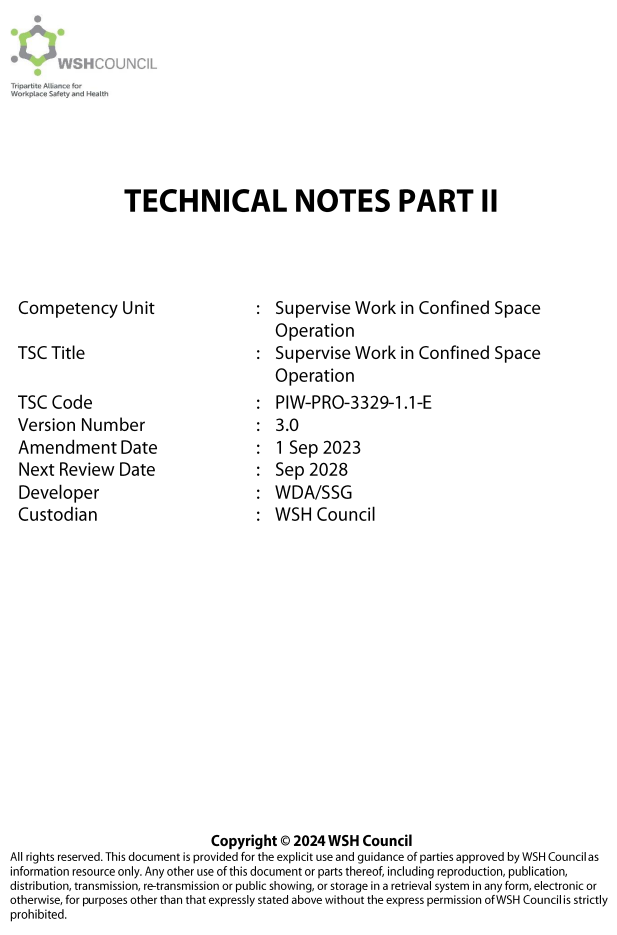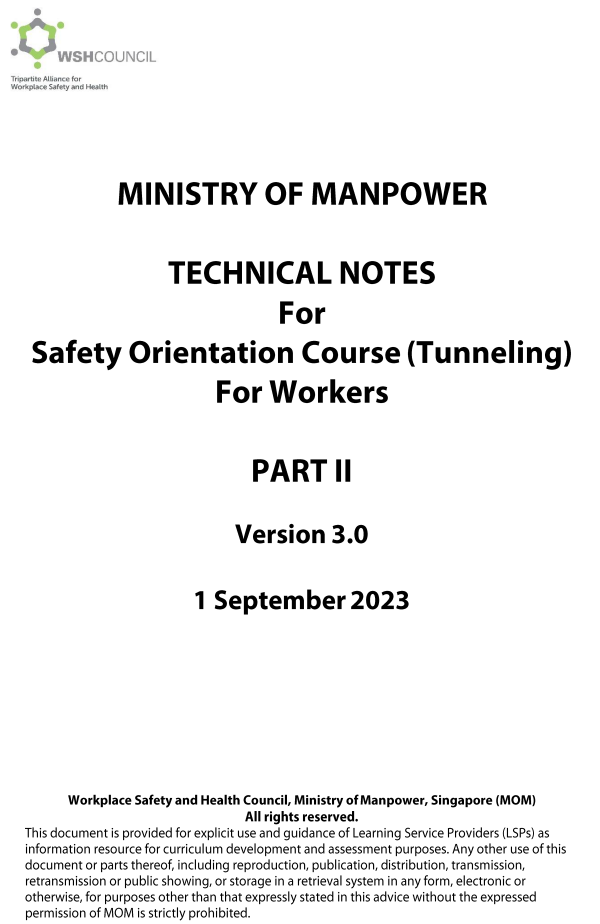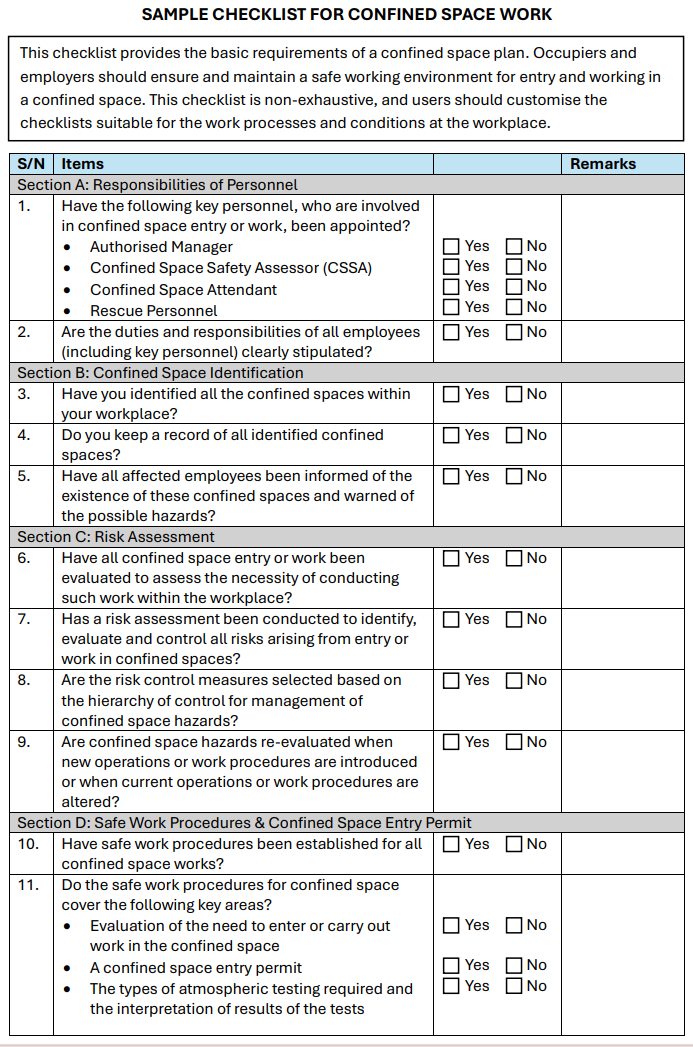Working Safely in Confined Spaces
Learn about the hazards of working in confined spaces. Find out about the requirements of the confined space entry permit and the roles of the employer.
Hazards in Confined Spaces
Many hazards can exist in confined spaces. Some examples include:
- Suffocation (due to oxygen deficiency)
- Fire and explosion (by flammable gases and vapours)
- Poisoning (by toxic gases, vapours or fumes)
- Engulfment or entrapment (by materials such as collapsing particles)
- Falling from heights (openings, scaffolds)
Confined Space Entry Permit
The confined space entry permit provides a formal check to ensure that all the elements of a safe system of work are in place before persons can enter and work in confined spaces.
It should include:
- Identification and location of the confined space;
- Purpose of entry;
- Entry date, time and duration;
- Potential hazards and their control measures;
- PPE;
- Other precautions (e.g. barricades, signboards);
- Emergency response plan;
- Name of confined space attendant;
- Atmospheric testing results (of the confined space); and
- Names and signatures of supervisor, confined space safety assessor and authorised manager.
Employer’s Role
You must:
- Evaluate the need to enter the confined space.
- Ensure safe means of access to and egress from the confined space.
- Make information of the confined space available to persons who may be exposed to the hazards of the confined space.
- Ensure safe practices are in place for opening the entrance to the confined space.
- Ensure there is sufficient and suitable lighting for entry into and work in the confined space.
- Implement procedures and controls for entry into the confined space including gas testing.
- Provide training for working safely in confined spaces for workers and supervisors.
- Establish emergency rescue plan and provide rescue equipment.
- Appoint a confined space attendant.

